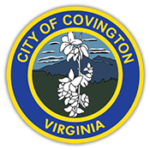Myth: People who are homeless should just get a job and then they would not be homeless.
Fact: Many people who are homeless do have jobs, sometimes two or even three. The National Coalition for the Homeless estimates as many as 40%-60% of people experiencing homelessness nationwide are employed. However, a paycheck does not necessarily solve their homelessness or other challenges.
In the City of Roanoke, a full-time worker earning $11.50/hr. minimum wage would need to work 52 hours per week to afford a one-bedroom apartment at the fair market rent of $803. At 40 hours per week, a household would need to earn $16.35/hour for a two-bedroom, according to the National Low Income Housing Coalition’s (NLIHC) annual 2020 Out of Reach Report.
In addition, it is difficult to find and keep a job while living in a car, tent, shelter, or outside with no place to bathe regularly, receive mail, do laundry, and feel safe enough to focus on employment responsibilities versus daily survival.
Myth: People choose to be homeless.
Fact: This myth is dangerous and allows us to ignore the trauma of homelessness and the neurobiological effects trauma has on humans. Being homeless is stressful, humiliating, exhausting, and dangerous. It is a hard day-to-day existence for men, women, and children.
Some people may choose to sleep outside rather than in a shelter because they fear leaving their pets or possessions outside. They also may not want to leave their community of others living outside. They may also be living with serious mental and physical health conditions with symptoms that make it challenging to have the capacity and ability to make rational decisions. In addition, some shelters and housing programs have strict criteria that potentially “screen out” the most vulnerable people.
When we take the time to engage and listen to someone’s story, we often hear they are not “choosing to be homeless,” Rather, the other choices available are undesirable, have been tried, or misunderstood. For now, their current situation is better than the alternative because they have become accustomed to living unhoused. Homelessness is traumatic and complicated, and solutions are not one-size-fits-all.
Myth: People who are homeless are dangerous, violent, and/or criminals.
Fact: A person who is homeless is no more likely to be a criminal than a person who is housed, with one legal exception: camping ordinances. People who are homeless break that law merely by being unhoused. The reality is that most spend their time and resources trying to survive and improve their situation.
Rather than being dangerous or lawbreakers, they are parents trying to work or find a job while they live in a car with their children. They are teens with no supportive adults in their lives while trying to find a place to live, so they can hopefully stay in school. They are senior citizens with poor health and a fixed income struggling to get by. People who are homeless are more likely to be victims of a crime than to commit a crime. We must not vilify people without homes but instead see them as neighbors in need of shelter and best-fit assistance to help them find a home.
Myth: Housing should come with conditions like being clean and sober.
Fact: Evidence tells us that people who are homeless can find stability and healing when provided empowering support focused on housing and other social services. Known as Housing First, this approach acknowledges the complexities of addiction, trauma, and the challenges of experiencing homelessness. It also believes that it can be tough to successfully address challenges while living on the streets or in an unsafe and unstable situation. Read more about the evidence behind approaches that drive an end to homelessness.
Housing First is an evidence-based practice in our local homeless crisis response system. For example, all publicly funded emergency shelters focus first and foremost on reducing barriers to housing and increasing household wraparound support services. The community also has scattered-site Housing First permanent supportive housing, where units are rented from private landlords, and the tenants are heavily engaged through case management.
Myth: There is nothing I can do about homelessness.
Fact: Effectively reducing homelessness will take the entire community working together around this common goal.
Be Kind: When those experiencing homelessness are asked what community members can do to help, the reply is resounding familiar, Be kind. Kindness is a rare commodity for those who are unhoused. Unspeakable acts of violence and disrespect occur to unhoused people daily, and often the act of kindness one shows is the only sharing of humanity experienced throughout the day.
Speak Up: Homelessness is a complex challenge rooted in many social injustices. To effectively reduce homelessness, we must advocate for person-centered, trauma-informed support that meets people where they are in life.
Share Time: Volunteerism is vital to the sustainability of existing and new resources.
Rent or Hire: People and families experiencing homelessness regularly need housing and work opportunities. Those unhoused are as diverse as the general public in their needs, experience, drive, and skills.
Myth: People experiencing homelessness are lazy.
Fact: Surviving on the street takes more work than we realize. Homeless men and women are often sleep-deprived, cold, wet, and sick. Their minds, hearts, and bodies are exhausted. With no transportation and little money, they can spend all day getting to food and maybe an appointment before searching for a safe place to sleep, all while trying to keep their personal possessions safe. It is not a life of ease. Though some help is available, they may not know where to begin navigating the maze of social service agencies and bureaucracy.
Myth: If people experiencing homelessness wanted to, they could pull themselves out of it.
Fact: Once an individual or family loses their home, getting back into housing can feel nearly impossible. Most people lose housing because of financial situations – they do not have enough money to provide housing for themselves/their families. Many are homeless because of job loss and underemployment. Imagine trying to get a job when you have no address to put on a resume, no phone number, no shower, and no clean-pressed clothes. Often, things like physical, mental, and emotional health, lack of transportation, and legal issues, hinder progress even more.
Contrary to popular belief, the resources available in our community are not ample enough to meet the need to help every homeless person. People experiencing homelessness do not want to remain homeless. However, some do ‘give up’ after months/years of trying to access services they don’t qualify for due to some regulatory or program requirement.
Myth: The homeless in our community are from somewhere else and moved here for all of the free services.
Fact: Experts say this is one of the most common and inaccurate assumptions about homeless individuals and families.
People experiencing homelessness who move to new areas do so because they are searching for work, have family in the area, or for other reasons unrelated to services. According to the 2022 homeless count in the Roanoke Valley, 79% percent of people experiencing homelessness resided in the area before becoming homeless.
Download a printable version of this document here.






